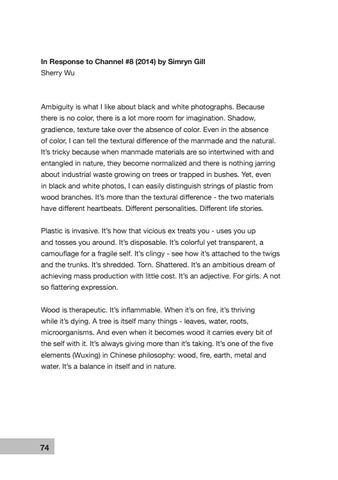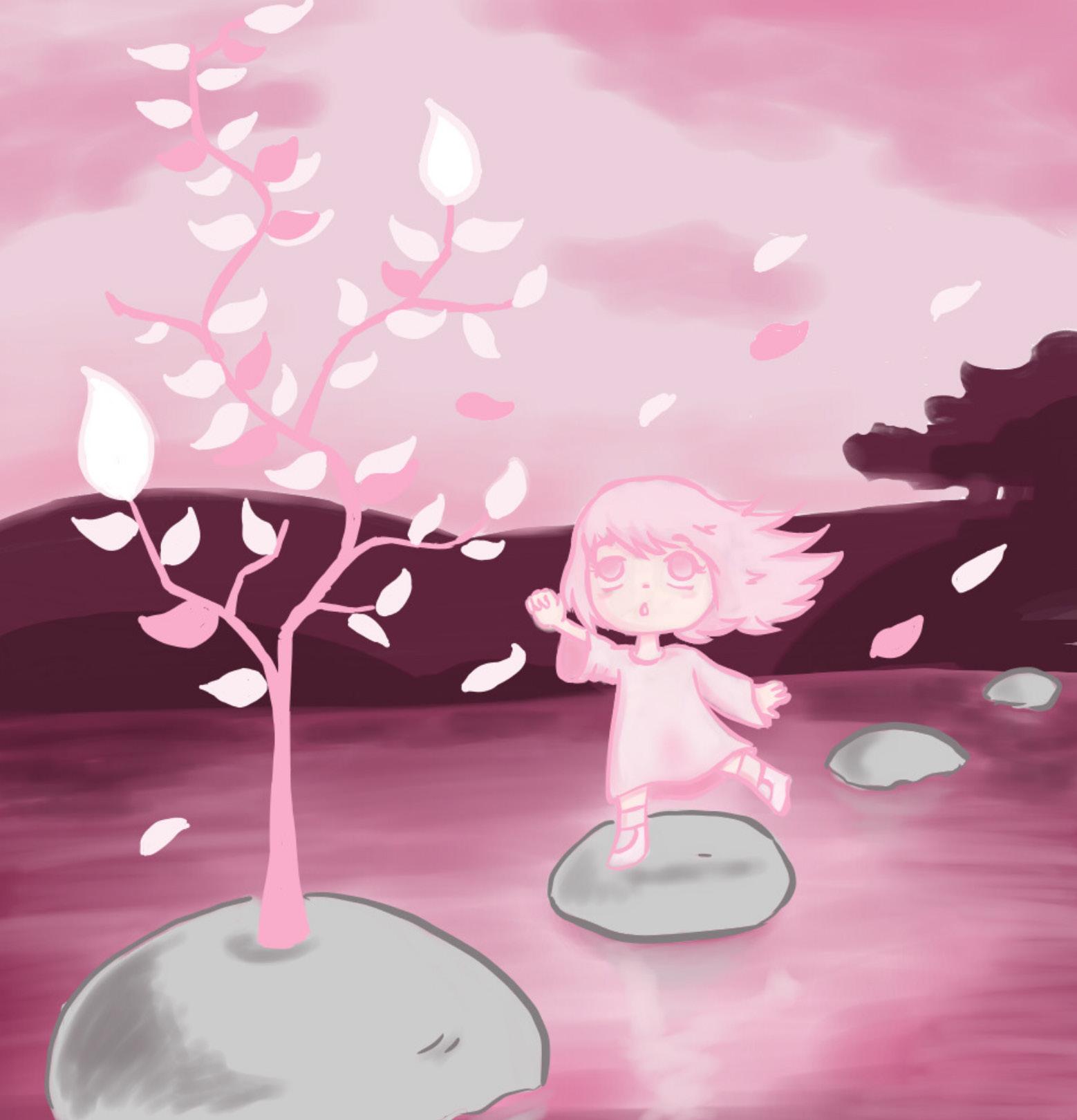In Response to Channel #8 (2014) by Simryn Gill Sherry Wu
Ambiguity is what I like about black and white photographs. Because there is no color, there is a lot more room for imagination. Shadow,
gradience, texture take over the absence of color. Even in the absence
of color, I can tell the textural difference of the manmade and the natural. It’s tricky because when manmade materials are so intertwined with and
entangled in nature, they become normalized and there is nothing jarring about industrial waste growing on trees or trapped in bushes. Yet, even
in black and white photos, I can easily distinguish strings of plastic from
wood branches. It’s more than the textural difference - the two materials have different heartbeats. Different personalities. Different life stories. Plastic is invasive. It’s how that vicious ex treats you - uses you up
and tosses you around. It’s disposable. It’s colorful yet transparent, a
camouflage for a fragile self. It’s clingy - see how it’s attached to the twigs and the trunks. It’s shredded. Torn. Shattered. It’s an ambitious dream of
achieving mass production with little cost. It’s an adjective. For girls. A not so flattering expression.
Wood is therapeutic. It’s inflammable. When it’s on fire, it’s thriving while it’s dying. A tree is itself many things - leaves, water, roots,
microorganisms. And even when it becomes wood it carries every bit of
the self with it. It’s always giving more than it’s taking. It’s one of the five elements (Wuxing) in Chinese philosophy: wood, fire, earth, metal and water. It’s a balance in itself and in nature.
74










